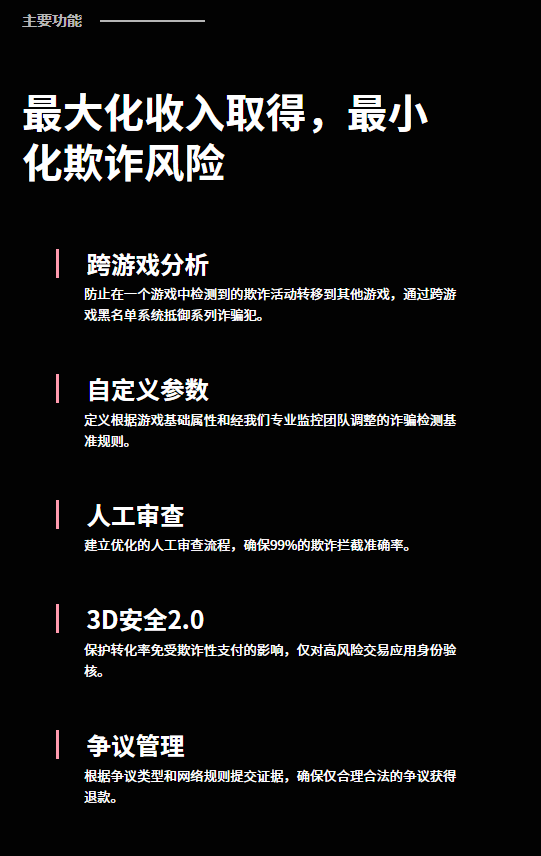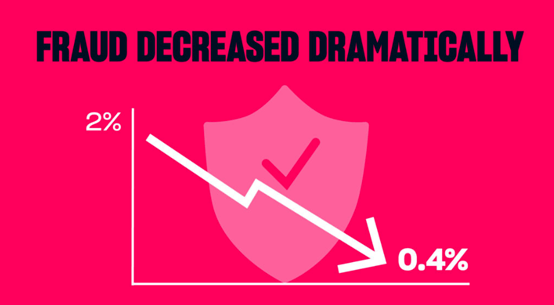Since the wave of overseas games started in 2018, Chinese games have maintained market competitiveness and revenue growth year by year until 2022. According to the "China Game Industry Report" released in previous years, from 2018, the "first year of overseas expansion", to 2021, the actual sales revenue of China's independently developed games in overseas markets were US$9.59 billion, US$11.59 billion, US$15.45 billion, and US$18.013 respectively. billion dollars.
However, starting in 2022, the fading of online dividends and the downturn of the global economy have cast a shadow on the global game market. From a global perspective, according to data provided by Data.ai, global mobile game spending in 2022 will be 110 billion U.S. dollars, a year-on-year decrease of 5%; from the perspective of games going overseas, according to the "Report on China's Games Going Abroad in 2022" It shows that the actual sales revenue of China's independently developed games in overseas markets was 17.346 billion, a decrease of nearly 700 million compared with the previous year.
Perhaps it is "adversity" that has made "cost reduction and efficiency improvement" one of the key topics in the past year. Looking at the upstream and downstream of the entire game industry chain, "cost reduction and efficiency improvement" is not that easy: at the research and development level, the market and users have increasingly higher requirements for the hard quality of products. As the number of entrants continues to increase and competition continues to escalate, the difficulty of content and gameplay innovation is also increasing; at the distribution level, competition for purchase volume is still fierce, and the privacy policies of large platforms The changes have also brought a lot of trouble to advertising attribution. Affected by many drastic changes, in the competition for overseas games that has gradually entered the second half, it seems that the focus of "cost reduction and efficiency improvement" should be on some partial infrastructure details, such as the clichéd payment - as we all know, in addition to research and development, the overseas development of games In addition to facing competition from the front-line battlefield at the issuance level, the optimization of the payment link is another important battlefield. If the problems of black cards, bad debts, fraud, etc. that have existed for many years can be successfully solved, it can directly increase the number of Commercial recycling improves efficiency and greatly improves the success rate of products.
'Historic' payment security issues
Regarding the issue of "payment security", Chen Jingbo, head of the Greater China region of global payment service provider Xsolla, once gave a very vivid example in an interview: "A QR code suddenly appears on an overseas game platform. Do you dare to scan it?" This is just one part of the "payment security" issue. Generally speaking, when we talk about payment security issues, their scope often covers black cards, bad debts, fraud, refunds, etc. These issues can be said to have a "long history". As early as More than ten years ago, when mobile games were just emerging, they were exposed to the public eye by the media - in 2011, a leading company in China's early overseas mobile game industry encountered serious bad debt problems. The revenue of a strategy game was good and it was at the top of the best-selling list all year round. However, in August of that year, the company discovered that 40% of the revenue from the game was uncollectible bad debts. This situation intensified in September, with bad debts The rate reaches more than 80%.

Chen Jingbo, head of Xsolla Greater China
The "bad debt" here usually refers to users using unofficial payment channels to pay for in-game consumption that cannot be settled. The money is not given to platforms like Apple or Google, and the platform cannot settle the money from the bank, so naturally it cannot be given to the developer. account, but at this time the virtual props or items in the game have been consumed, and the "refund" is similar.
Although the bad debt rate of more than 80% is only an isolated case, the bad debt problem has indeed always affected the revenue of game products. According to public information available around 2011, the bad debt rate of strategy games at that time was generally around 20%, and The top casual games are relatively low, and the bad debt rate is also around 2%. According to professionals in the payment field, the bad debt rate of games released in overseas markets such as Europe and the United States has always been a matter of great concern. If a game product has a bad debt rate of more than 2%, it will be difficult to succeed.

In addition, the issue of "payment security" is not limited to this. According to Chen Jingbo, the head of Xsolla Greater China, he shared in a previous interview that players in some areas will take organized actions to quickly consume game content through large amounts of consumption, and then through Paying for bug refunds, and then making profits or even gold based on the production of strategies and sharing of quickly consumed game content, such problems often cause publishers a huge headache. Problems such as the above must be resolved as a matter of priority.
Where to start to solve the problem of "payment security"?
Let’s start with a case: the monthly turnover of a large overseas game platform is about 3.6 million U.S. dollars, and the monthly transaction volume is about 300,000. If the relatively low fraud rate of 2% is used as the critical value to calculate, this amount It is a huge loss for any game platform or developer. Faced with problems such as card theft, fake accounts, fraud, using other people's credit cards for payment without permission, etc., they must be considered and thoroughly solved from multiple levels.
Let us take the small-amount recharge on the iOS platform as an example. Because small-amount recharges will not be inspected, payment problems occur frequently. The convenient small-amount recharge and refund without inspection is certainly a good experience for normal users, but It also provides more convenience for illegal products. For example, maliciously registering a large number of new accounts to recharge and then refund the money will make it difficult for developers to even query because of user privacy issues.
Of course, there are also some targeted monitoring and solutions for similar problems. For example, in the recharge process, we can monitor whether user accounts suddenly change devices and IPs for recharge operations, whether there are dozens or hundreds of devices recharging intensively every day, but with different accounts, etc. These indicators can help us discover illegal products. And precipitate data and blacklist. However, it is difficult for developers and game companies to focus on using similar monitoring methods. In particular, some monitoring and anti-fraud require specialized technologies, and some even involve device fingerprinting technology, etc. For game developers and publishers For business owners, it is difficult and burdensome to carry out such protection themselves. Therefore, for most gaming companies going overseas, a more realistic approach may be to find a payment partner that is more professional in terms of security, stability, and risk control.

The core advantages of Xsolla’s “anti-fraud system”
Talking about Xsolla’s “anti-fraud system”, Chen Jingbo once mentioned: “Many developers are particularly interested in Xsolla’s anti-fraud system.” According to Xsolla’s official introduction, its anti-fraud system can improve fraud monitoring through in-game parameters. , and uses hybrid machine learning to distinguish fraudulent activity from legitimate purchases through 24x7 transaction review, and then defeats fraudsters through reporting game traffic information, cross-game analysis and blacklisting custom analysis reports and dashboards - —One case worth mentioning is that after an online game creation system (GCS) platform integrated Xsolla’s anti-fraud system, the fraud rate among its more than 300,000 transactions was reduced from 2% to 0.4%, a drop of as much as 80% %. Over the past decade, more than 2,000 companies around the world have used this system, preventing millions of frauds every year.

As for the specific solution, as mentioned above, players organizedly exploit loopholes in refund rules to commit fraud. Xsolla uses advanced technical means and rich database records to classify game players and protect them from the grassroots level of the game ecosystem. Developer. On this basis, records of bad behavior and limits on consumption will reduce the risk of fraud and reduce game losses; in addition, fraudulent refunds cannot be made through Xsolla payments, except that there is no way to limit credit card refunds beyond the law. When users make refunds after paying through other methods, Xsolla will communicate with the publisher to minimize the bad debt rate.

There are three reasons why Xsolla's anti-fraud system can minimize fraud: First, Xsolla is an accounting merchant and supports more than 700 payment methods. The simplified payment procedure makes it easier to enter new markets; second, for chargebacks and refunds, Xsolla's unique verification link ensures that suspicious recharges will not be sent to acquirers. At the same time, Xsolla maintains long-term cooperative relationships with multiple credit card acquirers and can allocate payment traffic to multiple acquirers to minimize The risks caused by fraud directly help merchants complete this "labor-intensive" work; in addition, Xsolla uses 3-D Secure technology, which is controlled by IPS (international payment system, including Visa, Mastercard, American Express, China UnionPay , JCB, etc.) has been supported by most banks and acquirers around the world; for more than ten years, the huge transaction volume of up to 30 million transactions per minute during peak periods has enabled Xsolla to accumulate rich experience and build a mature system - —Years of experience accumulation, cooperative relationships with many credit card acquirers around the world, and Xsolla’s own strong technical support are the fundamental guarantees to help developers truly reduce the number of frauds.
In addition to the cases briefly mentioned in the previous article, a world-renowned gaming platform is also a partner and beneficiary of the Xsolla anti-fraud system. It is understood that in terms of payment, Xsolla helps users of the platform to purchase gift cards directly on the platform outside of mainstream distribution platforms and ecosystems, and provides localized pricing and language support for the settlement interface in all regional markets. Xsolla filters fraudulent payments through self-updating algorithms, and users conduct 24/7 review of disputed transactions using behavioral and data metrics. After partnering with Xsolla, the platform’s chargeback and chargeback rate dropped from 25% to 10% per month.
Conclusion
As mentioned at the beginning of the article, due to changes in the general environment, it is becoming more and more difficult for Chinese games to go overseas and participate in global competition. "Reducing costs and increasing efficiency" has become the top priority of all aspects of work. Compared with the extremely high threshold of hard quality improvement, content and gameplay innovation, and the huge advertising volume, what game developers and game companies can directly change is the infrastructure level problem, and payment is A very important part of it. Faced with organized chargebacks, endless fraud, and various payment security issues, finding a suitable payment partner to reduce the impact of fraud on revenue may be an easier way to achieve immediate results.